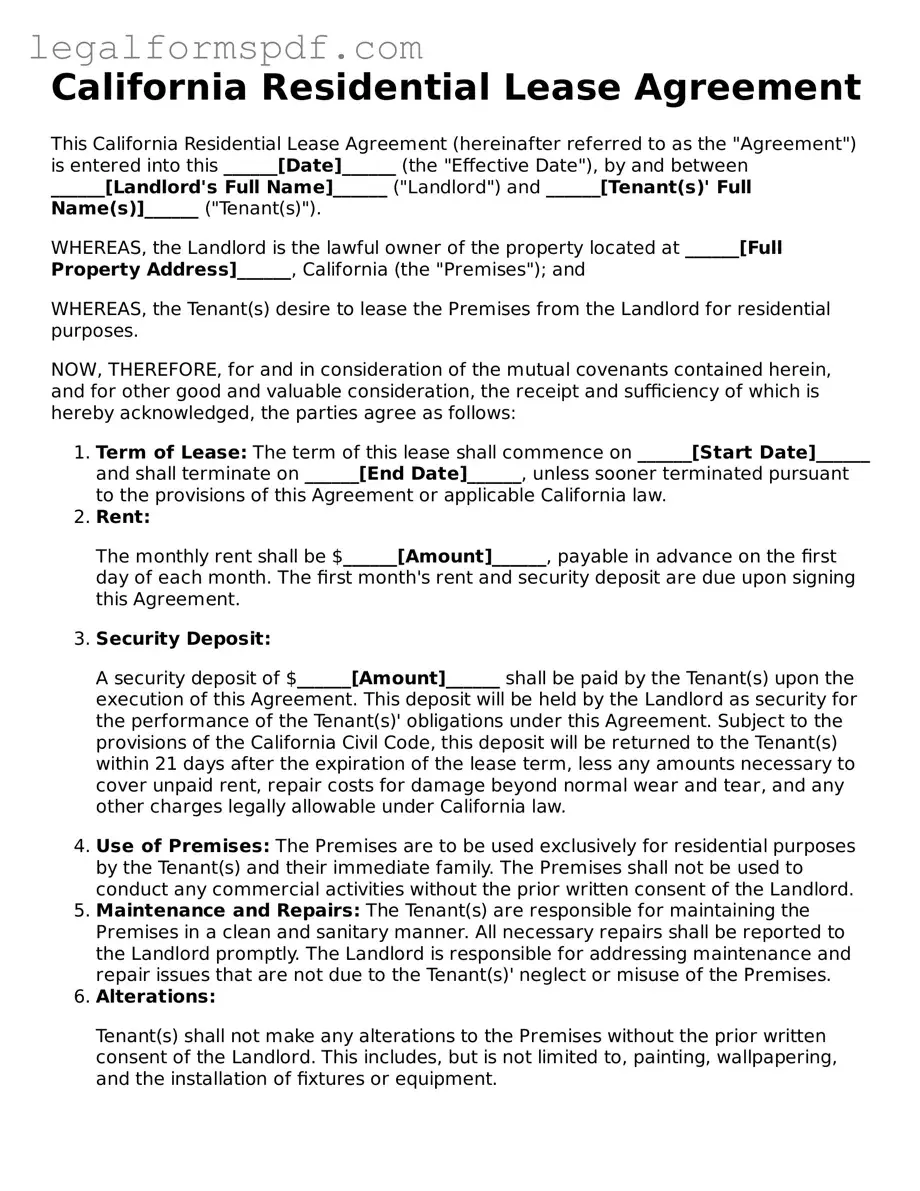What is a California Residential Lease Agreement?
A California Residential Lease Agreement is a legally binding contract between a landlord and a tenant. It outlines the terms and conditions under which the tenant can rent residential property from the landlord in the state of California. This agreement includes details such as the duration of the lease, monthly rent, security deposit amount, and rules regarding pets, maintenance, and utilities.
How long does a standard California Residential Lease Agreement last?
Typically, a standard California Residential Lease Agreement lasts for 12 months. However, the agreement can be tailored to any length of time as agreed upon by both the landlord and the tenant. Shorter or longer lease terms can be negotiated based on individual circumstances and needs.
Is a security deposit always required in California, and how much should it be?
Most landlords require a security deposit to protect themselves against potential damage to the property or unpaid rent. In California, the law limits the maximum security deposit to two months' rent for unfurnished rental units and three months' rent for furnished units. This does not include any additional pet deposits that the landlord might require.
Can the landlord increase the rent during the lease period?
During the fixed period of a lease agreement, landlords in California generally cannot increase the rent unless the lease specifically allows for an increase. For month-to-month tenancies, California law requires landlords to provide 30 days' notice for rent increases less than 10% and 90 days' notice for increases of 10% or more.
What rights do tenants have under a California Residential Lease Agreement?
Tenants in California have the right to a habitable living environment, the right to privacy, and the right to not be discriminated against among others. The lease agreement cannot waive these rights. Tenants also have the right to timely repairs of essential features like plumbing and heating.
Are pets allowed in rental properties in California?
Whether pets are allowed in a rental property is up to the discretion of the landlord. If pets are allowed, the lease agreement should specify any restrictions regarding type, size, and number of pets. Landlords might also require a pet deposit or additional pet rent.
What happens if a tenant breaks a lease early in California?
If a tenant breaks their lease early, they may be responsible for the remaining rent due under the lease agreement. However, California law requires landlords to make a reasonable effort to re-rent the property. If the landlord successfully re-rents the property, the original tenant may no longer be liable for the remaining rent.
How is a California Residential Lease Agreement terminated?
A California Residential Lease Agreement can be terminated in several ways. At the end of the lease term, the agreement might specify that it will either terminate or renew automatically. Otherwise, either party can terminate the agreement with proper notice, typically 30 days for month-to-month leases. For fixed-term leases, early termination options must be outlined in the lease itself.
